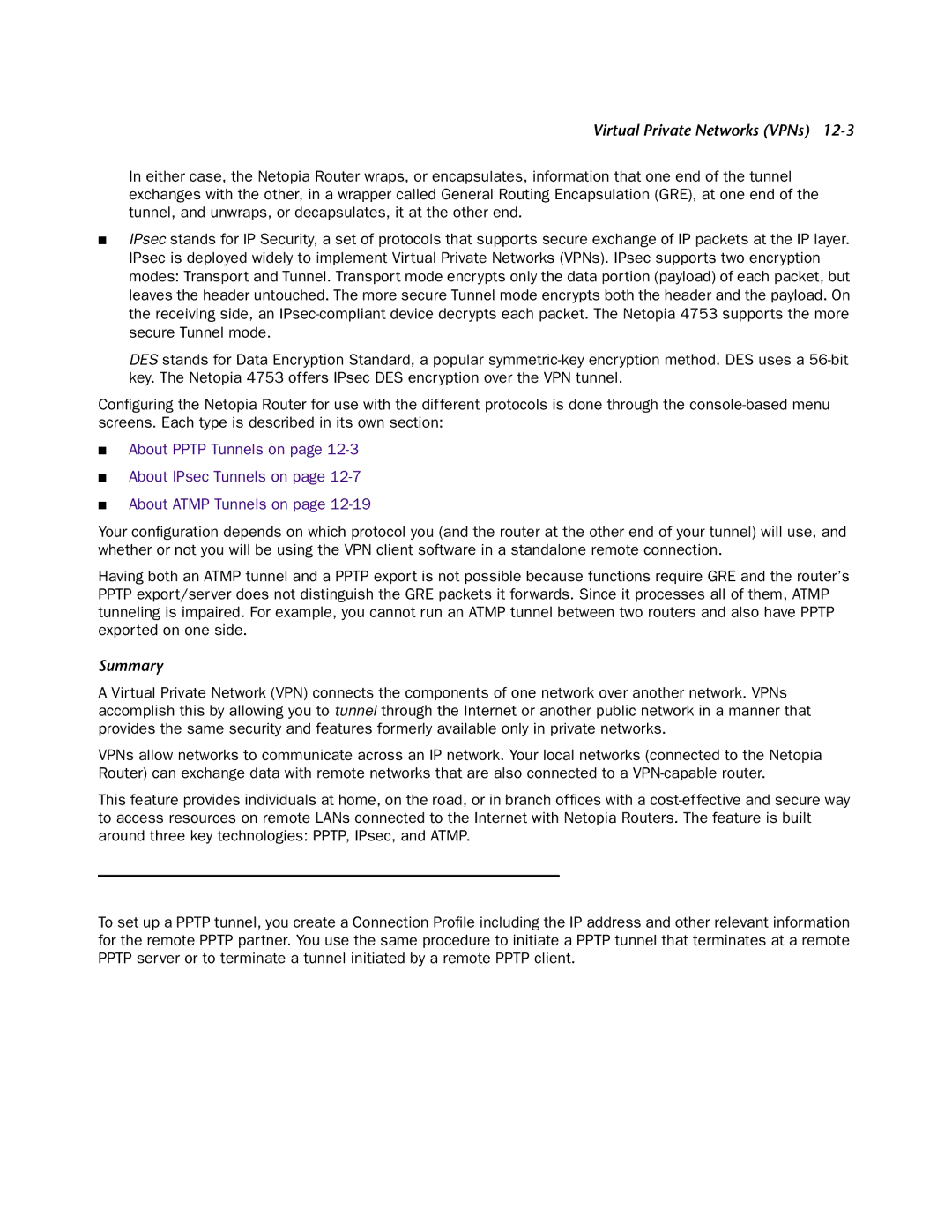Virtual Private Networks (VPNs)
In either case, the Netopia Router wraps, or encapsulates, information that one end of the tunnel exchanges with the other, in a wrapper called General Routing Encapsulation (GRE), at one end of the tunnel, and unwraps, or decapsulates, it at the other end.
■IPsec stands for IP Security, a set of protocols that supports secure exchange of IP packets at the IP layer. IPsec is deployed widely to implement Virtual Private Networks (VPNs). IPsec supports two encryption modes: Transport and Tunnel. Transport mode encrypts only the data portion (payload) of each packet, but leaves the header untouched. The more secure Tunnel mode encrypts both the header and the payload. On the receiving side, an
DES stands for Data Encryption Standard, a popular
Configuring the Netopia Router for use with the different protocols is done through the
■About PPTP Tunnels on page
■About IPsec Tunnels on page
■About ATMP Tunnels on page
Your configuration depends on which protocol you (and the router at the other end of your tunnel) will use, and whether or not you will be using the VPN client software in a standalone remote connection.
Having both an ATMP tunnel and a PPTP export is not possible because functions require GRE and the router’s PPTP export/server does not distinguish the GRE packets it forwards. Since it processes all of them, ATMP tunneling is impaired. For example, you cannot run an ATMP tunnel between two routers and also have PPTP exported on one side.
Summary
A Virtual Private Network (VPN) connects the components of one network over another network. VPNs accomplish this by allowing you to tunnel through the Internet or another public network in a manner that provides the same security and features formerly available only in private networks.
VPNs allow networks to communicate across an IP network. Your local networks (connected to the Netopia Router) can exchange data with remote networks that are also connected to a
This feature provides individuals at home, on the road, or in branch offices with a
About PPTP Tunnels
To set up a PPTP tunnel, you create a Connection Profile including the IP address and other relevant information for the remote PPTP partner. You use the same procedure to initiate a PPTP tunnel that terminates at a remote PPTP server or to terminate a tunnel initiated by a remote PPTP client.
